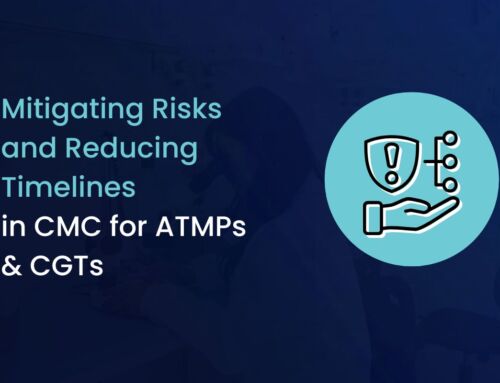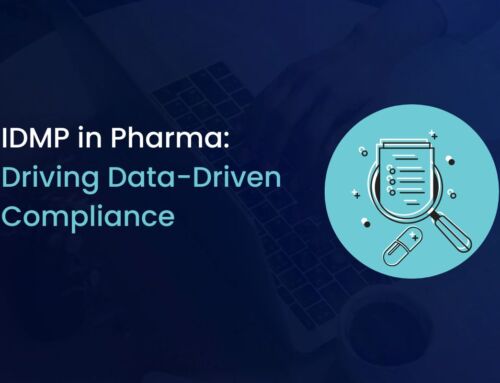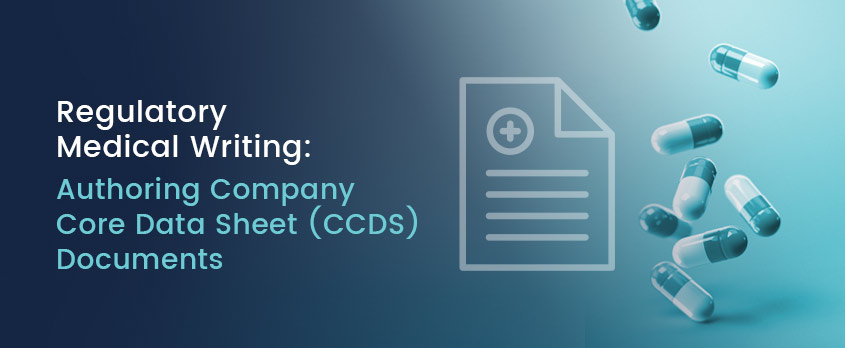
What Is Medical Writing?
Medical writing is a vital component of gaining and maintaining a drug’s market access. There are a variety of components necessary, but a Company Core Data Sheet (CCDS) requires a particularly demanding amount of effort from internal regulatory affairs teams. There are many moving parts to creating and/or updating CCDS documents that require a collective, pragmatic, and knowledgeable team-oriented approach.

Claim Your Free EU MDR Checklist Now!
Make sure you and your business are compliant with the new EU MDR. Get our 23 page checklist for actionable technical documentation requirements.
Why Pharmaceutical Companies Rely on Third-party CCDS Support
As a medical writing services provider that works with clients in varying stages of their document preparation, we come across a range of obstacles with CCDS projects. One main challenge is the lack of expertise from even the most seasoned and well-versed medical writers.
Often, they are more familiar with the previously acceptable and less stringent labeling regulations. Regulations are constantly changing (e.g., new ICH guidelines and regional requirements). Keeping up-to-date demands dedicated resources and specialized knowledge.
Below are the most common reasons why Pharmaceutical companies rely on third-party CCDS Support:
- General lack of expertise and scarce internal resources
- Comprehension of the literature search process
- CCDS development requires a unique blend of medical expertise, regulatory knowledge, and writing skills. Finding and retaining this talent in-house can be difficult.
- Outsourcing allows companies to focus on their core strengths (research, development, marketing) while leaving specialized tasks like CCDS creation to experts.
- Outsourcing can be more cost-effective than hiring and training internal staff, especially for smaller companies or those with limited resources.
The overall efforts required to create or update CCDS documents in accordance with the International Council for Harmonization of Technical Requirements for Pharmaceuticals for Human Use (ICH) can vary greatly due to the current regulatory situation of the company. Members of Regulatory Affairs teams often are not familiar enough with their own portfolio to be able to write a comprehensive and compliant CCDS internally.
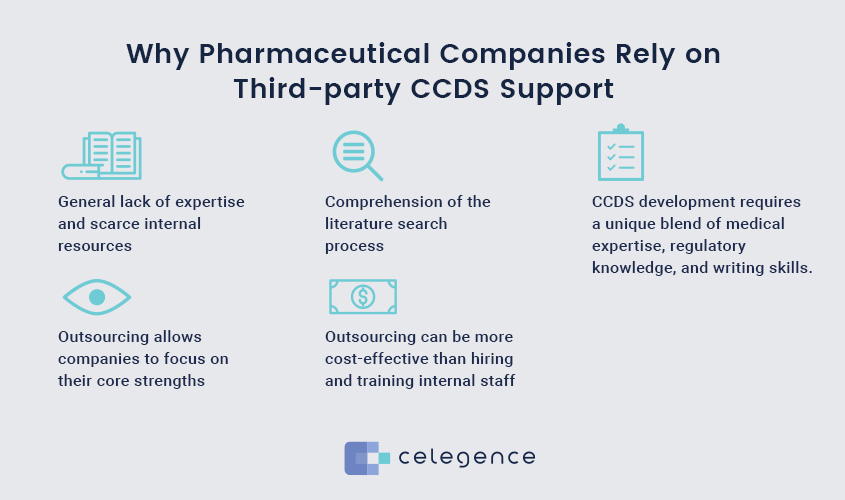
Updating CCDS Documentation
There are generally two triggers that lead to pharmaceutical companies updating their CCDS. The first is due to a regulatory labelling recommendation or mandate from the health authorities. While the effort required to remediate the labelling discrepancies can vary, there are certain steps your safety team must take to account for the possible CCDS implications of the recommendation. While a labelling mandate is straightforward and requires all companies to adjust the labelling of their product, it may not necessitate an update to the CCDS. After a health authority recommendation or mandate, your internal safety team must evaluate whether the internal CCDS should be updated.
The second most common way a CCDS update is set into motion stems from the internal review system from a manufacturer’s pharmacovigilance team. Most teams run systematic literature and case reviews of adverse drug reactions at a varying cadence with the goal of identifying any safety concerns. If the internal team believes there is a safety concern, then the CCDS will be updated first, followed by updates to the product’s labelling.

Claim Your Free EU MDR Checklist Now!
Make sure you and your business are compliant with the new EU MDR. Get our 23 page checklist for actionable technical documentation requirements.
What Should Companies Keep in Mind When Updating Their CCDS?
There are aspects of the CCDS that do not fall under the responsibility of safety teams, yet they can still prompt a change to the CCDS. These elements are related to the Chemistry, Manufacturing and Controls (CMC) or product quality sections. While not all companies include these elements in their CCDS, the companies that do must allow the CMC teams to update those portions in the CCDS when necessary. Furthermore, since the CMC teams often make updates at the same time as the safety team, it is critical that both teams coordinate. Usually these updates happen at the same cadence as the systemic safety reviews, which tend to be every two years.
Rigorous quality control processes are essential to ensure accuracy, consistency, and compliance with regulations during these updates. Additionally, utilizing technology solutions, such as document management systems and automation tools, can streamline the CCDS update process and significantly improve efficiency for both safety and CMC teams.
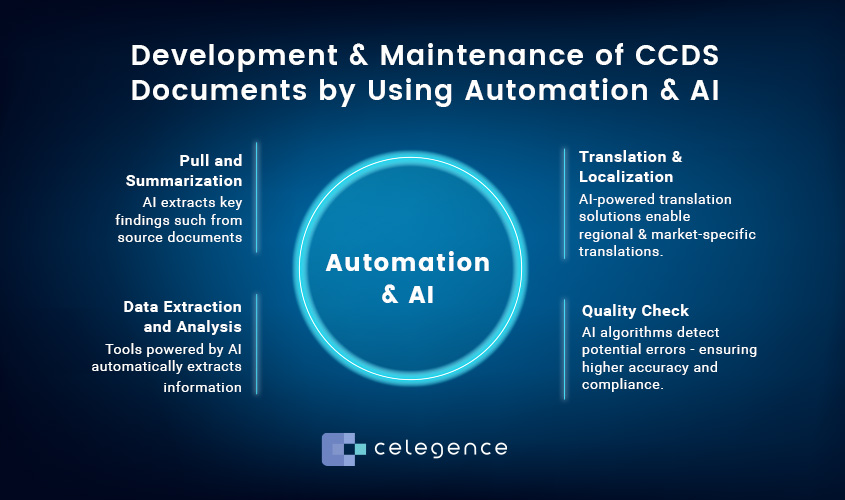
Development & Maintenance of CCDS Documents by Using Automation and AI
- Data Extraction and Analysis: Tools powered by AI automatically extracts information from multiple sources, including clinical trial reports, published literature, various labels, and regulatory databases and perform a gap analysis. This has drastically reduced the time and effort needed for manual data extraction.
- Pull and Summarization: AI extracts key findings such as similarities and dissimilatrities from source documents, assisting content developers in writing the CCDS by suggesting relevant section information based on available knowledge
- Quality Check: AI algorithms detect potential errors, inconsistencies, and omissions in the CCDS, ensuring higher accuracy and compliance.
- Translation & Localization: AI-powered translation solutions enable regional and market-specific translations of the CCDS, ensuring consistency across languages.
The Pros of Outsourcing CCDS Support
Companies inherently require various levels of support from third party consultancies, from a minor update to writing a complete CCDS from scratch. Authoring the CCDS from scratch may require literature searches, case reviews of 2,000+ different articles, as well as reviews of existing product labelling. This can be extremely time consuming especially for safety teams at smaller pharmaceutical companies. With CCDS support from a medical writing service provider like Celegence, we allow for internal teams to focus on more strategic initiatives. As experts in the field, we are also able to expedite the timelines required for your CCDS. Our team consists of dedicated resources, and with Subject Matter Expert expertise, we can strengthen your search strategy and significantly decrease turnaround times for your CCDS.

CCDS Case Study
You can read about how Celegence supported a major pharmaceutical company with their CCDS creation and updates in this CCDS case study. To read more in depth about our suite of pharmaceutical capabilities, you can explore our Medical Writing services and our Regulatory Labeling services.
